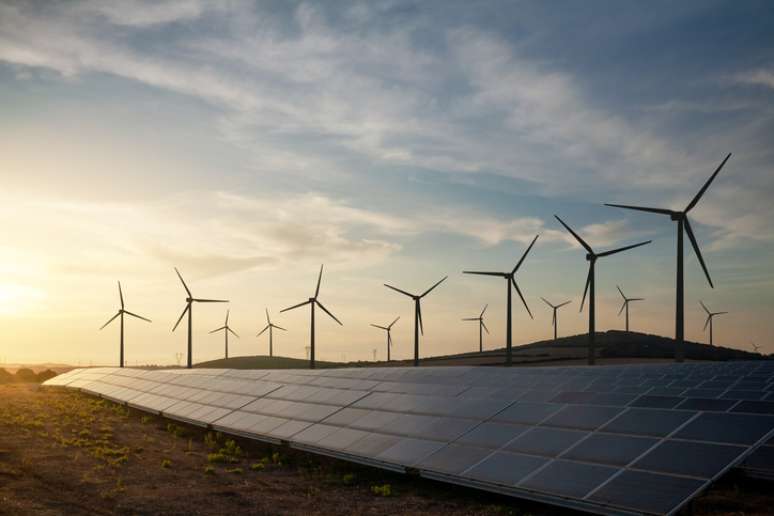One of the hottest topics in the world, renewable energy never runs out and can come from different sources, such as water and sun
The search for more sustainable lifestyles concerns a series of aspects of society’s daily life: from food to means of transport, they are changing to adapt to a daily life that is more respectful of nature.
And this would be no different with existing energy sources. For this reason, renewable energy has attracted more and more attention around the world, as well as gaining followers and even becoming a topic in international discussions among countries that want to adopt this form of energy.
Therefore, it is important to understand what renewable energy is, its forms, advantages and disadvantages, as well as knowing the landscape of this type of energy in Brazil – and what are the scenarios for the future of this environmentally friendly energy in the country and around the world. .
What is renewable energy?
Understanding what renewable energy is is easy by simply reading the term: it is all the energy that can be renewed and, therefore, will always be available to be used.
It is seen this way because its sources are resources that can remain available in the long term or even infinitely and, therefore, will not run out. In other words, they are not exhaustible.
This energy is also called “alternative energy source”, since it is seen as an option in addition to non-renewable energy sources, which are those that emit pollutants and cause global warming.
What is non-renewable energy?
Non-renewable energy is the exact opposite of renewable energy. In other words, they are sources of energy that do not renew themselves naturally.
Among the types of non-renewable energy that exist are nuclear energy and fossil energy, such as oil.
What are the types of renewable energy?
Renewable energy sources are natural resources that are naturally renewed and are abundantly available for use.
There are six renewable energy sources that are being studied and used around the world to become fuels and energy for use in people’s daily routines, industrial production and many other places where the use of energy is necessary.
Are they:
Solar power
Solar energy is a type of energy that originates from the sun. In other words, it is an inexhaustible source of energy, since the sun illuminates the Earth every day, emitting solar radiation and heat that are transformed into energy.
Solar radiation can be transformed into two forms of energy. One of these is thermal energy, which is used to heat rooms or is used in thermoelectric power plants, where it transforms water into steam to drive turbines which, in turn, drive energy generators.
The other is voltaic energy, which is captured by solar panels and converted into electricity for use in homes, businesses, industries and other environments.
Wind energy
Wind energy comes from the wind: it arises thanks to the force generated by the movement caused by the winds, which rotates the propellers of the wind towers – which have the shape of enormous weather vanes – which, in turn, move the turbines, activating energy generators electric. power.
One of the most popular renewable energies, wind energy presents a difficulty: because it depends on the wind, supply interruptions occur in periods of little movement of air masses. This is usually solved by installing the towers where the winds are consistent year-round.
Hydroelectric energy
Generated by the movement of river water, hydropower – also called hydroelectric power – is one of the most popular types of renewable energy in Brazil.
Its generation is simple: the movement of the river water ends up turning turbines which generate electricity with this movement.
Despite being a renewable energy source, hydropower receives a lot of criticism for its environmental impact. This is because, to build a hydroelectric power plant, it is necessary to flood large areas of forest, destroying native species and even driving villages away from their homes and lands.
Energy from the seas
In addition to rivers, sea water can be used to produce energy.
In this case, energy is generated thanks to the movement of the tides and the production of waves. To achieve this goal it is possible to build a structure similar to a hydroelectric power plant to capture tidal water during flood periods, rotating the turbines and producing electricity.
At the end of the flood period the waters are released back into the sea.
Geothermal energy
Geothermal energy is a curious form of energy: its source is the heat emitted by the earth’s core. These temperatures – which at the center of the Earth can reach 4,000 °C – are used to produce energy through steam.
To generate this type of energy, pipelines are built where water is injected. With the heat emitted by the Earth, water turns into steam that drives turbines that generate electricity. The steam returns to the water after being cooled, restarting the entire process, i.e. renewing the energy source.
Despite its renewable operation, there are concerns about the use of geothermal energy, as the construction of plants requires a high investment value, in addition to the fact that the energy generation process is capable of injecting chemical pollutants into the soil.
Energy from biomass
Biomass is all non-fossil organic matter, which is reused in some sort of recycling and burned to generate electricity. It is possible to classify the types of remains that can become biomass into solid, liquid and gaseous.
Solid biomass includes wood, coal, sugar cane and organic remains of plants and animals; gaseous biomass includes biogas and methane gas emitted from landfills; Liquid biomass includes any liquid that originates from the transformation of organic material through chemical or biological processes, such as ethanol and biodiesel.
What are the advantages and disadvantages of renewable energy?
Each type of energy has advantages and disadvantages and this would be no different in the case of renewable energy.
Among the advantages are:
- They are energies that never end, ensuring a continuous supply for their use;
- These are energies that contribute to the reduction of gases and other pollutants in the environment, reducing the environmental impact;
- They do not generate waste, avoiding disposal in the environment and the accumulation of waste in the world;
- Most do not harm animal life, reducing the risk of species extinction.
However, the disadvantages to consider are:
- High installation costs, which make these types of energy inaccessible to a large part of the world’s population;
- Visual and acoustic pollution;
- These are energies subject to the unpredictability of nature and which could fail in the event of climate change.
Is there renewable energy in Brazil?
YES! Brazil is a world reference in the use of renewable energy, as well as being one of the countries that uses hydroelectric energy the most, being home to three of the five largest hydroelectric plants in the world: Itaipu, Belo Monte and Tucuruí I and II plants .
In addition to hydroelectric energy, according to the 2022 Energy Budget, the other most used forms of renewable energy in the country were wind energy, biomass and solar energy.
Access Terra Planeta and find out more about the environment and sustainability!
Source: Terra
Rose James is a Gossipify movie and series reviewer known for her in-depth analysis and unique perspective on the latest releases. With a background in film studies, she provides engaging and informative reviews, and keeps readers up to date with industry trends and emerging talents.






